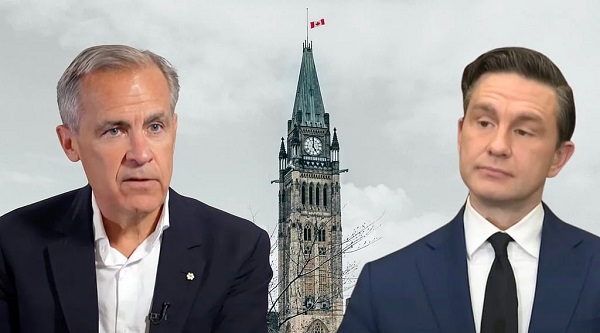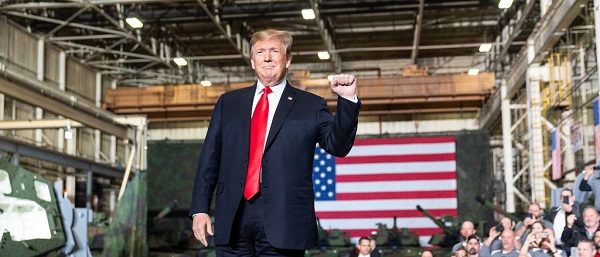Brownstone Institute
The Unraveling of Censorship

BY
The US Constitution was ratified in 1789. Nine years later, in a fit of frenzy over enemies domestic and foreign, the US Congress passed the Alien and Sedition Acts. The Sedition Act in particular imposed nationwide censorship edicts that made it illegal to criticize the government or its officials. The public was so furious about the obvious attack on the First Amendment that Thomas Jefferson was swept into the White House in the election of 1800, with a specific mandate to end the outrage. The offending laws were promptly repealed.
The significance of the events was to demonstrate to an entire generation that eternal vigilance would be necessary if the US was to remain what it set out to be. Even with a Constitution, government is a threat to human rights.
The Americans would not let it stand. It was not a partisan issue, despite how the champions of censorship tried to make it one. It is about one word: freedom. That was the whole point of the American experiment. No crisis justifies taking it away.
Two centuries and a quarter later, we’ve faced something similar but far more wide-ranging. Social media was invented to give everyone a voice. But under the guise of pandemic management, unelected government officials worked daily for years with all the top social media platforms to silence dissident voices. Many of those voices are associated with Brownstone Institute.
“If the allegations made by plaintiffs are true,” wrote US District Judge Terry A. Doughty in a brilliant memo that should be read by everyone, “the present case arguably involves the most massive attack against free speech in United States’ history. The plaintiffs are likely to succeed on the merits in establishing that the government has used its power to silence the opposition.”
And because of that, the judge has issued (on July 4, 2023) an injunction naming many unelected government officials from many different agencies.
Here is a list of the defendants named:
Defendants consist of President Joseph R Biden (“President Biden”), Jr, Karine Jean-Pierre (“Jean-Pierre”), Vivek H Murthy (“Murthy”), Xavier Becerra (“Becerra”), Dept of Health & Human Services (“HHS”), Dr. Hugh Auchincloss (“Auchincloss”), National Institute of Allergy & Infectious Diseases (“NIAID”), Centers for Disease Control & Prevention (“CDC”), Alejandro Mayorkas (“Mayorkas”), Dept of Homeland Security (“DHS”), Jen Easterly (“Easterly”), Cybersecurity & Infrastructure Security Agency (“CISA”), Carol Crawford (“Crawford”), United States Census Bureau (“Census Bureau”), U. S. Dept of Commerce (“Commerce”), Robert Silvers (“Silvers”), Samantha Vinograd (“Vinograd”), Ali Zaidi (“Zaidi”), Rob Flaherty (“Flaherty”), Dori Salcido (“Salcido”), Stuart F. Delery (“Delery”), Aisha Shah (“Shah”), Sarah Beran (“Beran”), Mina Hsiang (“Hsiang”), U. S. Dept of Justice (“DOJ”), Federal Bureau of Investigation (“FBI”), Laura Dehmlow (“Dehmlow”), Elvis M. Chan (“Chan”), Jay Dempsey (“Dempsey”), Kate Galatas (“Galatas”), Katharine Dealy (“Dealy”), Yolanda Byrd (“Byrd”), Christy Choi (“Choi”), Ashley Morse (“Morse”), Joshua Peck (“Peck”), Kym Wyman (“Wyman”), Lauren Protentis (“Protentis”), Geoffrey Hale (“Hale”), Allison Snell (“Snell”), Brian Scully (“Scully”), Jennifer Shopkorn (“Shopkorn”), U. S. Food & Drug Administration (“FDA”), Erica Jefferson (“Jefferson”), Michael Murray (“Murray”), Brad Kimberly (“Kimberly”), U. S. Dept of State (“State”), Leah Bray (“Bray”), Alexis Frisbie (“Frisbie”), Daniel Kimmage (“Kimmage”), U. S. Dept of Treasury (“Treasury”), Wally Adeyemo (“Adeyemo”), U. S. Election Assistance Commission (“EAC”), Steven Frid (“Frid”), and Kristen Muthig (“Muthig”).
As we can observe, then, the effort was government wide and covered two presidential administrations. Unlike in 1798, the silencing of dissident voices took place not because of a piece of legislation voted on by Congress. These unelected people took it upon themselves to police speech and push for the banning of accounts that offered opinions contrary to what the government wanted out there controlling the public mind.
It is not a secret that this has been going on for a long time. The president himself gave interviews demanding that Facebook block accounts for misinformation. The previous presidential spokesperson admitted and bragged that the White House was working closely with all social media accounts. Discovery in the case of Missouri v. Biden has yielded an overwhelming amount of evidence, many thousands of documents cited in the memorandum, proving extensive collusion between government and tech companies.
The damage to the common good by such censorship has been incalculable. In what they called a pandemic, discussion of alternative treatments was banned, as were questions about lockdowns, masking, and vaccination. It was deemed misinformation and disinformation. LinkedIn closed accounts in ways that severely harmed peoples’ careers. Twitter blocked posting in ways that shattered lives. The same happened at all channels. Even up to the day of the injunction, YouTube was still taking down videos at the behest of government officials.
Not even viable presidential candidates like Robert Kennedy, Jr., can count on gaining a voice on the largest video platform. The existing regime is actually silencing its critics in hopes of consolidating control. This habit has been the norm in most countries and most times. But the US was supposed to be different. Here the freedom to speak is protected above even in the interests of government.
This was tested in 1798 and tested again these last three years. “During the COVID-19 pandemic,” writes the judge, “a period perhaps best characterized by widespread doubt and uncertainty, the United States Government seems to have assumed a role similar to an Orwellian Ministry of Truth.”
The judge further quotes Harry Truman: “Once a government is committed to the principle of silencing the voice of opposition, it has only one place to go, and that is down the path of increasingly repressive measures, until it becomes a source of terror to all its citizens and creates a country where everyone lives in fear.”
For many people in the US today, they are just now hearing of this case that has been reported at Brownstone Institute for years now. Indeed, it became very obvious to many of us involved in the Great Barrington Declaration that censorship had become the norm in American public life just as it is around the world. Indeed, the United Nations has made it clear that it believes in censorship for the entire world.
Will this injunction and memo end the problem? No but it is a start. The Supreme Court will likely weigh in and then the real reckoning begins. Are we still a nation that defends and values freedom as an ideal? The answer to this question must be yes else all is lost. Even now, many people are commenting on this injunction with the question: what is the enforcement mechanism?
The question alone highlights the crisis. It’s no longer clear that we are a nation of laws. It’s no longer clear that we live under a representative democracy in which the people rule through those they elect to hold power. This is what must change.
At last this court action may finally provoke a debate about the administrative state that embarked on the great silencing. Its machinery seized control of the country in March 2020 in a great turning point in American history. It’s taken more than three years to finally observe a major pushback. The struggle to maintain freedom will always be with us as a great task of every generation.
Brownstone Institute
Bizarre Decisions about Nicotine Pouches Lead to the Wrong Products on Shelves

From the Brownstone Institute
A walk through a dozen convenience stores in Montgomery County, Pennsylvania, says a lot about how US nicotine policy actually works. Only about one in eight nicotine-pouch products for sale is legal. The rest are unauthorized—but they’re not all the same. Some are brightly branded, with uncertain ingredients, not approved by any Western regulator, and clearly aimed at impulse buyers. Others—like Sweden’s NOAT—are the opposite: muted, well-made, adult-oriented, and already approved for sale in Europe.
Yet in the United States, NOAT has been told to stop selling. In September 2025, the Food and Drug Administration (FDA) issued the company a warning letter for offering nicotine pouches without marketing authorization. That might make sense if the products were dangerous, but they appear to be among the safest on the market: mild flavors, low nicotine levels, and recyclable paper packaging. In Europe, regulators consider them acceptable. In America, they’re banned. The decision looks, at best, strange—and possibly arbitrary.
What the Market Shows
My October 2025 audit was straightforward. I visited twelve stores and recorded every distinct pouch product visible for sale at the counter. If the item matched one of the twenty ZYN products that the FDA authorized in January, it was counted as legal. Everything else was counted as illegal.
Two of the stores told me they had recently received FDA letters and had already removed most illegal stock. The other ten stores were still dominated by unauthorized products—more than 93 percent of what was on display. Across all twelve locations, about 12 percent of products were legal ZYN, and about 88 percent were not.
The illegal share wasn’t uniform. Many of the unauthorized products were clearly high-nicotine imports with flashy names like Loop, Velo, and Zimo. These products may be fine, but some are probably high in contaminants, and a few often with very high nicotine levels. Others were subdued, plainly meant for adult users. NOAT was a good example of that second group: simple packaging, oat-based filler, restrained flavoring, and branding that makes no effort to look “cool.” It’s the kind of product any regulator serious about harm reduction would welcome.
Enforcement Works
To the FDA’s credit, enforcement does make a difference. The two stores that received official letters quickly pulled their illegal stock. That mirrors the agency’s broader efforts this year: new import alerts to detain unauthorized tobacco products at the border (see also Import Alert 98-06), and hundreds of warning letters to retailers, importers, and distributors.
But effective enforcement can’t solve a supply problem. The list of legal nicotine-pouch products is still extremely short—only a narrow range of ZYN items. Adults who want more variety, or stores that want to meet that demand, inevitably turn to gray-market suppliers. The more limited the legal catalog, the more the illegal market thrives.
Why the NOAT Decision Appears Bizarre
The FDA’s own actions make the situation hard to explain. In January 2025, it authorized twenty ZYN products after finding that they contained far fewer harmful chemicals than cigarettes and could help adult smokers switch. That was progress. But nine months later, the FDA has approved nothing else—while sending a warning letter to NOAT, arguably the least youth-oriented pouch line in the world.
The outcome is bad for legal sellers and public health. ZYN is legal; a handful of clearly risky, high-nicotine imports continue to circulate; and a mild, adult-market brand that meets European safety and labeling rules is banned. Officially, NOAT’s problem is procedural—it lacks a marketing order. But in practical terms, the FDA is punishing the very design choices it claims to value: simplicity, low appeal to minors, and clean ingredients.
This approach also ignores the differences in actual risk. Studies consistently show that nicotine pouches have far fewer toxins than cigarettes and far less variability than many vapes. The biggest pouch concerns are uneven nicotine levels and occasional traces of tobacco-specific nitrosamines, depending on manufacturing quality. The serious contamination issues—heavy metals and inconsistent dosage—belong mostly to disposable vapes, particularly the flood of unregulated imports from China. Treating all “unauthorized” products as equally bad blurs those distinctions and undermines proportional enforcement.
A Better Balance: Enforce Upstream, Widen the Legal Path
My small Montgomery County survey suggests a simple formula for improvement.
First, keep enforcement targeted and focused on suppliers, not just clerks. Warning letters clearly change behavior at the store level, but the biggest impact will come from auditing distributors and importers, and stopping bad shipments before they reach retail shelves.
Second, make compliance easy. A single-page list of authorized nicotine-pouch products—currently the twenty approved ZYN items—should be posted in every store and attached to distributor invoices. Point-of-sale systems can block barcodes for anything not on the list, and retailers could affirm, once a year, that they stock only approved items.
Third, widen the legal lane. The FDA launched a pilot program in September 2025 to speed review of new pouch applications. That program should spell out exactly what evidence is needed—chemical data, toxicology, nicotine release rates, and behavioral studies—and make timely decisions. If products like NOAT meet those standards, they should be authorized quickly. Legal competition among adult-oriented brands will crowd out the sketchy imports far faster than enforcement alone.
The Bottom Line
Enforcement matters, and the data show it works—where it happens. But the legal market is too narrow to protect consumers or encourage innovation. The current regime leaves a few ZYN products as lonely legal islands in a sea of gray-market pouches that range from sensible to reckless.
The FDA’s treatment of NOAT stands out as a case study in inconsistency: a quiet, adult-focused brand approved in Europe yet effectively banned in the US, while flashier and riskier options continue to slip through. That’s not a public-health victory; it’s a missed opportunity.
If the goal is to help adult smokers move to lower-risk products while keeping youth use low, the path forward is clear: enforce smartly, make compliance easy, and give good products a fair shot. Right now, we’re doing the first part well—but failing at the second and third. It’s time to fix that.
Addictions
The War on Commonsense Nicotine Regulation

From the Brownstone Institute
Cigarettes kill nearly half a million Americans each year. Everyone knows it, including the Food and Drug Administration. Yet while the most lethal nicotine product remains on sale in every gas station, the FDA continues to block or delay far safer alternatives.
Nicotine pouches—small, smokeless packets tucked under the lip—deliver nicotine without burning tobacco. They eliminate the tar, carbon monoxide, and carcinogens that make cigarettes so deadly. The logic of harm reduction couldn’t be clearer: if smokers can get nicotine without smoke, millions of lives could be saved.
Sweden has already proven the point. Through widespread use of snus and nicotine pouches, the country has cut daily smoking to about 5 percent, the lowest rate in Europe. Lung-cancer deaths are less than half the continental average. This “Swedish Experience” shows that when adults are given safer options, they switch voluntarily—no prohibition required.
In the United States, however, the FDA’s tobacco division has turned this logic on its head. Since Congress gave it sweeping authority in 2009, the agency has demanded that every new product undergo a Premarket Tobacco Product Application, or PMTA, proving it is “appropriate for the protection of public health.” That sounds reasonable until you see how the process works.
Manufacturers must spend millions on speculative modeling about how their products might affect every segment of society—smokers, nonsmokers, youth, and future generations—before they can even reach the market. Unsurprisingly, almost all PMTAs have been denied or shelved. Reduced-risk products sit in limbo while Marlboros and Newports remain untouched.
Only this January did the agency relent slightly, authorizing 20 ZYN nicotine-pouch products made by Swedish Match, now owned by Philip Morris. The FDA admitted the obvious: “The data show that these specific products are appropriate for the protection of public health.” The toxic-chemical levels were far lower than in cigarettes, and adult smokers were more likely to switch than teens were to start.
The decision should have been a turning point. Instead, it exposed the double standard. Other pouch makers—especially smaller firms from Sweden and the US, such as NOAT—remain locked out of the legal market even when their products meet the same technical standards.
The FDA’s inaction has created a black market dominated by unregulated imports, many from China. According to my own research, roughly 85 percent of pouches now sold in convenience stores are technically illegal.
The agency claims that this heavy-handed approach protects kids. But youth pouch use in the US remains very low—about 1.5 percent of high-school students according to the latest National Youth Tobacco Survey—while nearly 30 million American adults still smoke. Denying safer products to millions of addicted adults because a tiny fraction of teens might experiment is the opposite of public-health logic.
There’s a better path. The FDA should base its decisions on science, not fear. If a product dramatically reduces exposure to harmful chemicals, meets strict packaging and marketing standards, and enforces Tobacco 21 age verification, it should be allowed on the market. Population-level effects can be monitored afterward through real-world data on switching and youth use. That’s how drug and vaccine regulation already works.
Sweden’s evidence shows the results of a pragmatic approach: a near-smoke-free society achieved through consumer choice, not coercion. The FDA’s own approval of ZYN proves that such products can meet its legal standard for protecting public health. The next step is consistency—apply the same rules to everyone.
Combustion, not nicotine, is the killer. Until the FDA acts on that simple truth, it will keep protecting the cigarette industry it was supposed to regulate.
-

 Crime1 day ago
Crime1 day ago‘Modern-Day Escobar’: U.S. Says Former Canadian Olympian Ran Cocaine Pipeline with Cartel Protection and a Corrupt Toronto Lawyer
-

 National13 hours ago
National13 hours agoPsyop-Style Campaign That Delivered Mark Carney’s Win May Extend Into Floor-Crossing Gambits and Shape China–Canada–US–Mexico Relations
-

 Daily Caller2 days ago
Daily Caller2 days agoDemocrats Explicitly Tell Spy Agencies, Military To Disobey Trump
-

 COVID-1910 hours ago
COVID-1910 hours agoCovid Cover-Ups: Excess Deaths, Vaccine Harms, and Coordinated Censorship
-

 Alberta2 days ago
Alberta2 days agoAlberta on right path to better health care
-

 Bruce Dowbiggin11 hours ago
Bruce Dowbiggin11 hours agoBurying Poilievre Is Job One In Carney’s Ottawa
-

 Alberta24 hours ago
Alberta24 hours ago‘Weird and wonderful’ wells are boosting oil production in Alberta and Saskatchewan
-

 Daily Caller2 days ago
Daily Caller2 days agoALAN DERSHOWITZ: Can Trump Legally Send Troops Into Our Cities? The Answer Is ‘Wishy-Washy’








